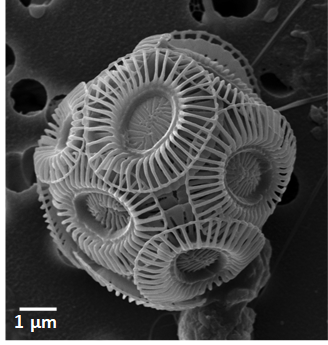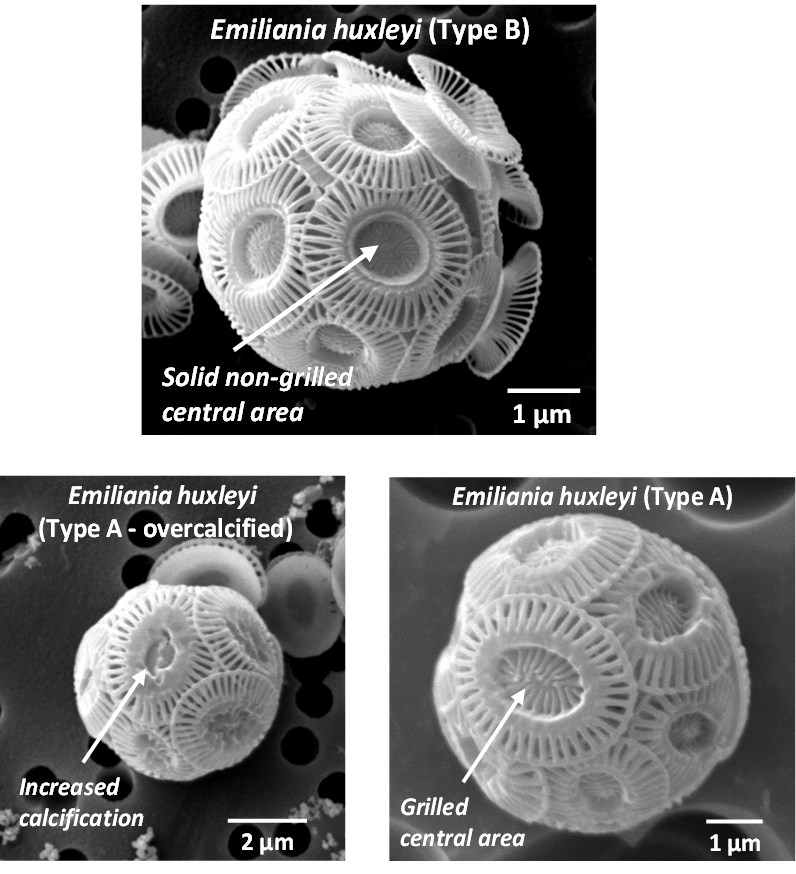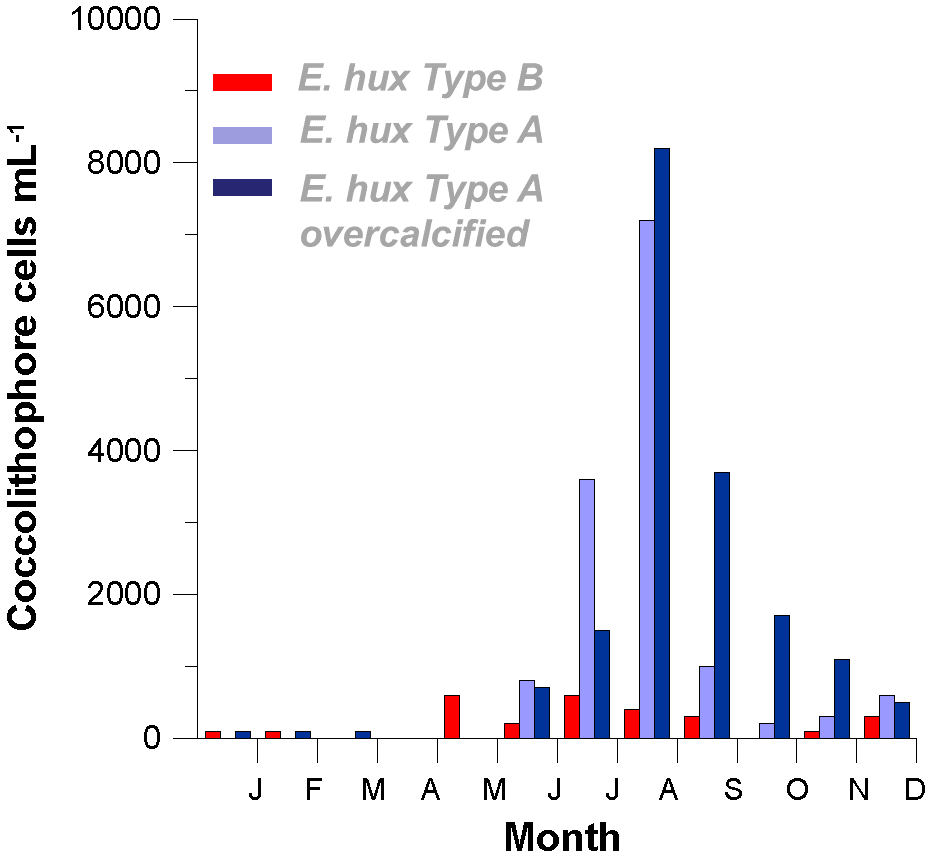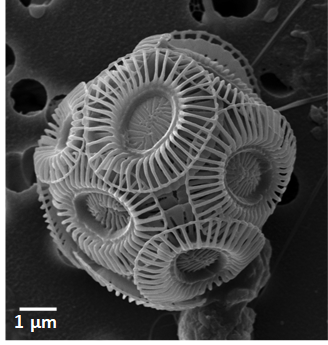Coccolithophores are a group of single-celled phytoplankton characterised by calcareous (calcite) scales termed coccoliths. They are an important component of the phytoplankton community which occupy the base of the marine food web, contributing to marine primary production, and play a key role in biogeochemical cycles in the ocean.
Monthly phytoplankton samples, collected at the Scottish Coastal Observatory (SCObs) monitoring site at Stonehaven over a 4 year period (2010 - 2013), were analysed to provide a first assessment of the diversity and abundance of coccolithophores present in relation to environmental variables including carbonate chemistry (León et al., 2018).
Six coccolithophore species were recorded; Emiliania huxleyi, Syracosphaera spp., Syracosphaera corolla, Coronosphaera mediterranea, Helicosphaera carteri HOL perforate, and Coccolithus pelagicus Braarudii spp., with Emiliania huxleyi (Figure b) the most dominant. The highest abundance of Emiliania huxleyi was observed during mid-summer when water temperatures were at their highest and nutrient concentrations (total oxidised nitrogen, silicate, phosphate, ammonia & nitrite) were at their lowest.

Figure 1: Photo Emiliania huxleyi, the dominant coccolithophore at the SCObs monitoring site at Stonehaven. © Kevin Mackenzie, University of Aberdeen.
Two morphotypes of Emiliania huxleyi cells were observed at Stonehaven, corresponding to three different calcification morphotypes: type A, type A overcalcified and type B (Figure 2). A distinct seasonality was recorded with type B mainly observed in spring, type A increasing from early (June) to late summer (August) and type A overcalcified forms dominating from late summer (August) through winter (Figure 3). León et al. (2018) found little evidence, using the parameters collected, to indicate coccolithophore calcification was influenced by carbonate chemistry at Stonehaven. This research is consistent with other field studies indicating the unsuitability of coccolithophores as biological indicators for ocean acidification (ICES, 2014) and highlights the need for long-term monitoring of coccolithophore shells to distinguish any changes as a consequence of anthropogenic activities. The study flagged the importance of understanding the local seasonality of coccolithophore diversity and morphology in interpreting data from discrete research cruises.

Figure 2: Emiliania huxleyi morphotypes observed at the Stonehaven sampling site.

Figure 3: Emiliania huxleyi morphotype seasonal distribution at the Stonehaven sampling site.
Marine ecosystems are adapted to their physical and chemical environment. Any changes in the physical characteristics of the marine environment can influence marine life and sustainable use of the seas. It is therefore important to understand changes in these physical and chemical characteristics in assessing whether we are working towards Scotland’s vision for clean, healthy, safe, productive, biologically diverse marine coastal environments, managed to meet the long-term needs of nature and people.
This assessment of physical and chemical characteristics covers, circulation, sea level, waves, temperature and salinity, as well as stratification and water clarity (turbidity).
The oceans are absorbing much of the carbon dioxide and excess heat resulting from a changing global climate. This absorption results in ocean acidification and increasing temperatures contribute to a loss of oxygen from the sea. These processes may have an adverse impact on marine life, and therefore the latest information on ocean acidification and dissolved oxygen (one of the Clean and safe Eutrophication assessments) are also presented.
The five case studies demonstrate some applications related to these assessments. These include a review of Scotland’s tidal stream resource, an example of dissolved oxygen measurements using novel technologies, and three illustrations of variability of ocean acidification and marine organisms (two species of calcifying plankton, coccolithophores and pelagic gastropods at Stonehaven, and one species of cold-water coral).
The Physical characteristics and ocean acidification assessment in Scotland’s Marine Atlas 2011 can be found on the Scottish Government web archive here.

Links and resources
|
, 2018. Seasonal variability of the carbonate system and coccolithophore Emiliania huxleyi at a Scottish Coastal Observatory monitoring site. Estuarine, Coastal and Shelf Science, 202, pp.302 - 314. Available at: http://www.sciencedirect.com/science/article/pii/S0272771417307758. |

